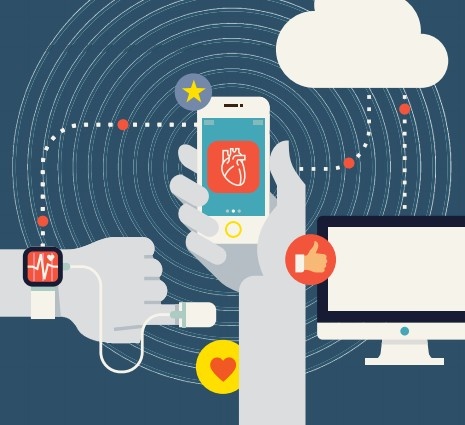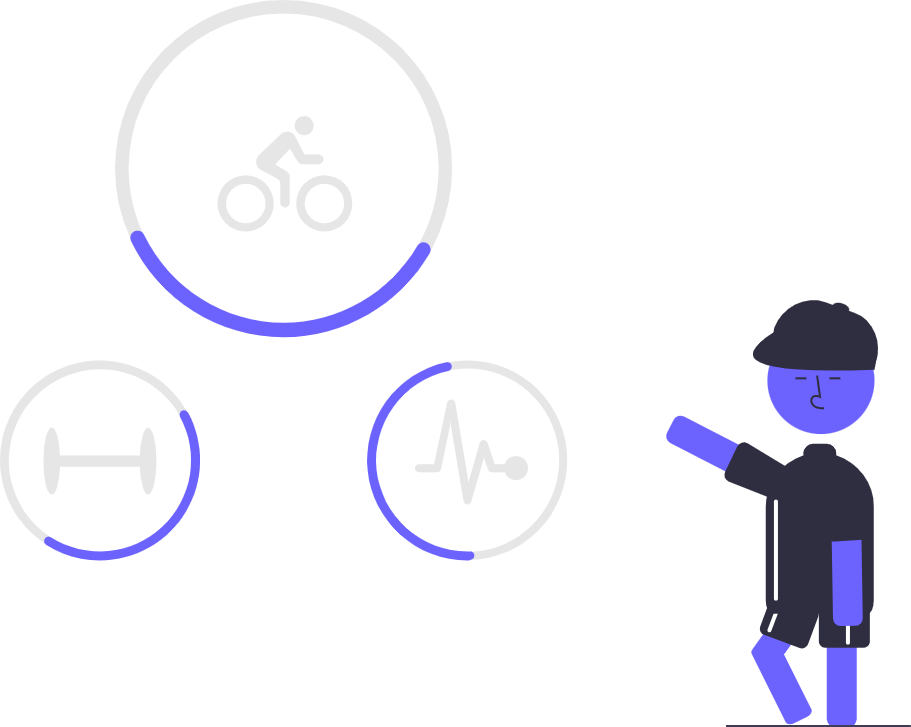Remote patient monitoring
From workplace wellness programs to post-hospitalization mobility, wearables can be an effective tool for capturing patient generated data. Learn more about examples of our novel advances in the use of wearables and other remote monitoring technologies to enhance patient care and augment data collection in clinical trials.

Key learnings from our research and consulting projects
Accuracy and motivating behavior change
Wearable devices have the potential to motivate individuals to engage in healthy behaviors such as walking more, losing weight and taking medication in addition to being an effective tool to capture patient data. The device itself is not sufficient — behavior change strategies should be coupled with the devices in order to maximize effectiveness.

Validated
We have worked with biopharma and tech companies to help design the collection of patient reported outcomes and biometrics through mobile and wearable devices. This includes validated surveys on behaviors such as medication adherence, sleep, and mood as well as objective data on step counts, sleep patterns, and heart rate.
Requires feedback
Well-designed communication strategies and feedback loops are important aspects of any program looking to encourage healthy behavior through the use of devices.
Targeted strategies are key
Leaderboards and competition can be great strategies to motivate individuals to engage physical activity, however they may not be the most effective tool for a given population. These strategies tend to encourage top performers, as opposed to individuals who stand the most to gain.
Equal or better
We have previously demonstrated smartphones and wearable devices are accurate for tracking activity.
Initiation and sustained use
Common challenges with clinical or research programs include low enrollment rates, non-representative or imbalanced patient populations and protocol complexity. As such, many opportunities exist to improve program efficiency, from patient identification through enrollment and program initiation. We have worked with industry partners to design procedures to significantly improve program enrollment rates across different clinical areas including cardiology, immunology, obesity, and oncology.
Opt-out preferred
We previously conducted a clinical trial which explored the effect of opt-in vs. opt-out framing on enrollment in a COVID-19 testing program. This project found an opt-out framed recruitment strategy significantly increased enrollment into the program when compared to an opt-in strategy.
Tailor interventions
Older, less-tech savvy individuals are less likely to engage in the use of activity trackers, therefore clinical programs targeting older individuals should consider unique ways to engage these individuals. Gamification and incentives are both great ways to not only initiate use of wearables, but also to encourage sustained use.
Scale is possible
We have established a behavioral engagement program for a large technology company that was implemented along with the use of wearables to increase device utilization and changes in health behaviors related to physical activity, weight loss, and sleep.

© 2025 Catalyst Health LLC. All rights reserved.